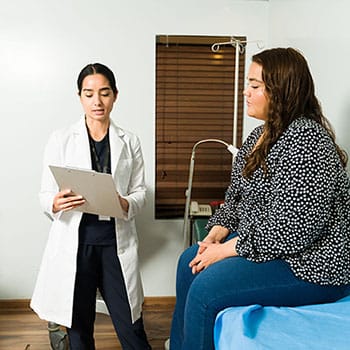DUBLIN, Ohio — From understanding insurance coverage and learning new therapies to managing diet, medications and more, those living with diabetes play a serious balancing act daily. Diabetes affects approximately 40 million Americans, according to the CDC’s National Diabetes Statistics Report – but not all are impacted equally.
As part of National Diabetes Awareness Month, Cardinal Health is shining a spotlight on the Hispanic American population as one of the largest and fastest-growing minority population in the United States – and one of the top high-risk populations for diabetes. The U.S. Department of Health and Human Services’ Office of Minority Health (OMH) reports that, in 2022, Hispanic-American adults were 60% more likely to be diagnosed with diabetes by a physician than non-Hispanic white adults. Hispanics also were more than twice as likely to be hospitalized for treatment of end-stage renal disease related to diabetes as compared to non-Hispanic whites. Not only that, but Mexican-Americans are more likely to be living with undiagnosed diabetes at nearly three times the national average.
There are several factors at play that are thought to contribute to this higher risk; some of these may be language and cultural barriers, which can make learning a new therapy or medication regimen or working with a physician more challenging. This may be why Hispanics have generally worse outcomes than other adults in America, according to this Pew Research Center study here. To put this into perspective, according to a report in the American Family Physician, less than one-fourth of American physicians self-identify as Spanish-speaking. According to this study, this means that for every 1,500 estimated Spanish-speaking patients, there is one Spanish-speaking physician, shining a spotlight on a true gap in the healthcare system today.
“This is a critical population for us to focus marketing and advocacy efforts on,” said Anthony Alvarez, senior vice president and general manager of Edgepark. Edgepark is a business unit of Cardinal Health at-Home Solutions, which delivers critical medical supplies directly to patients’ doorsteps. Alvarez adds, “Across all of Cardinal Health, we’re focused on promoting health equity and helping underserved populations get improved access to care. While there are certainly other underserved communities when it comes to getting the right care for diabetes, this language dynamic means that we need to market to this population differently and ensure that the customer experience is representative of their community and culture.”
Daniel Gracia, a sales representative with Edgepark, sees firsthand the impact language and cultural barriers have on patient outcomes. Gracia is part of a team at Edgepark that’s focused on working within communities to bring better educational support to Hispanic American patients to improve patient outcomes.
“There’s a need for more bilingual staff and culturally tailored educational support to build trust and improve education about diabetes management,” Gracia said.
For Gracia, that work is personal. His aunt, whose first language is Spanish, has Type 1 diabetes and uses a continuous glucose monitor (CGM) to manage her disease. CGMs are critical tools that help people living with diabetes monitor their blood glucose levels, spot trends and help better understand how their bodies react to certain factors, such as diet, stress and physical activity.
“Spanish-language resources have been incredibly helpful to my aunt’s ability to fully understand and manage her condition with confidence, making her daily life using this technology that much easier,” Gracia said. “If a Hispanic patient has limited English proficiency, it may be difficult for them to fully understand their diagnosis or treatment plans.”
In addition to cultural and language barriers, Hispanic Americans are more likely to be lower income, making it difficult to purchase nutritious foods or live a healthy lifestyle, according to DiaTribe.org, a nonprofit foundation that provides resources to help people with diabetes to live healthier lives. This population is also more likely to be diagnosed with obesity, according to the OMH. Obesity is a major cause of Type 2 diabetes and can contribute long-term to serious comorbidities and complications.
Dr. Julie Islam, a diabetes and endocrinology provider at the Family Health Centers of San Diego, says that the prevalence of “diabesity,” which is the term for when a patient has obesity and diabetes, is not slowing down across the country. The Family Health Centers of San Diego is located in the Barrio Logan neighborhood, which is predominantly Spanish speaking. She cares for a large percentage of Hispanic Americans, along with other immigrant, as well as people who are unhoused. Dr. Islam explains that major challenges her patients face are a lack of access to quality food and reduced medication adherence. Helping her patients better understand diabetes and ways they can prevent complications are among her primary goals.

“We have many patients who suffer from food insecurity or live in areas of food deserts – or they are in a situation in which they need to decide to buy food for their kids or their own medications, but not both,” she said. “Often times, medication becomes the lower priority. We have programs that help our patients get medications for little to no cost, and we offer patient assistance programs to try to help our patients get what they need without having to compromise medications or therapy over food.”
CGMs are an important tool in helping patients understand the impact medication or food has on blood glucose levels. Because of the positive results CGMs have proven to bring to patient care, Cardinal Health at-Home Solutions is deeply dedicated to advocating for access to critical diabetes management technologies, including working with legislators and non-profit organizations to support reimbursement improvement for Medicaid and Medicare patients to ensure increased access to key products like CGMs.
“CGMs have changed how clinicians manage diabetes,” Dr. Islam said. “Now that we can better equip patients with this technology, our main hurdles are establishing a good rapport with Hispanic American patients and gaining their trust. These patients need to see and feel that you are in it with them for the long haul – they need to feel that you really do care about what happens to them.”
When a patient feels supported, no doubt their outcomes improve, Gracia said. “Seeing firsthand the positive impact that we are making on patients’ lives, especially in helping our healthcare providers bridge gaps in care, has been the most rewarding aspect of my work,” Gracia adds. “We will continue to do our part in making sure minority populations get the education and tools they need – it’s the right thing to do for patient care.”
Learn more about how you can support the diabetic community during National Diabetes Awareness Month this November – and beyond – by visiting the American Diabetes Association at diabetes.org.







